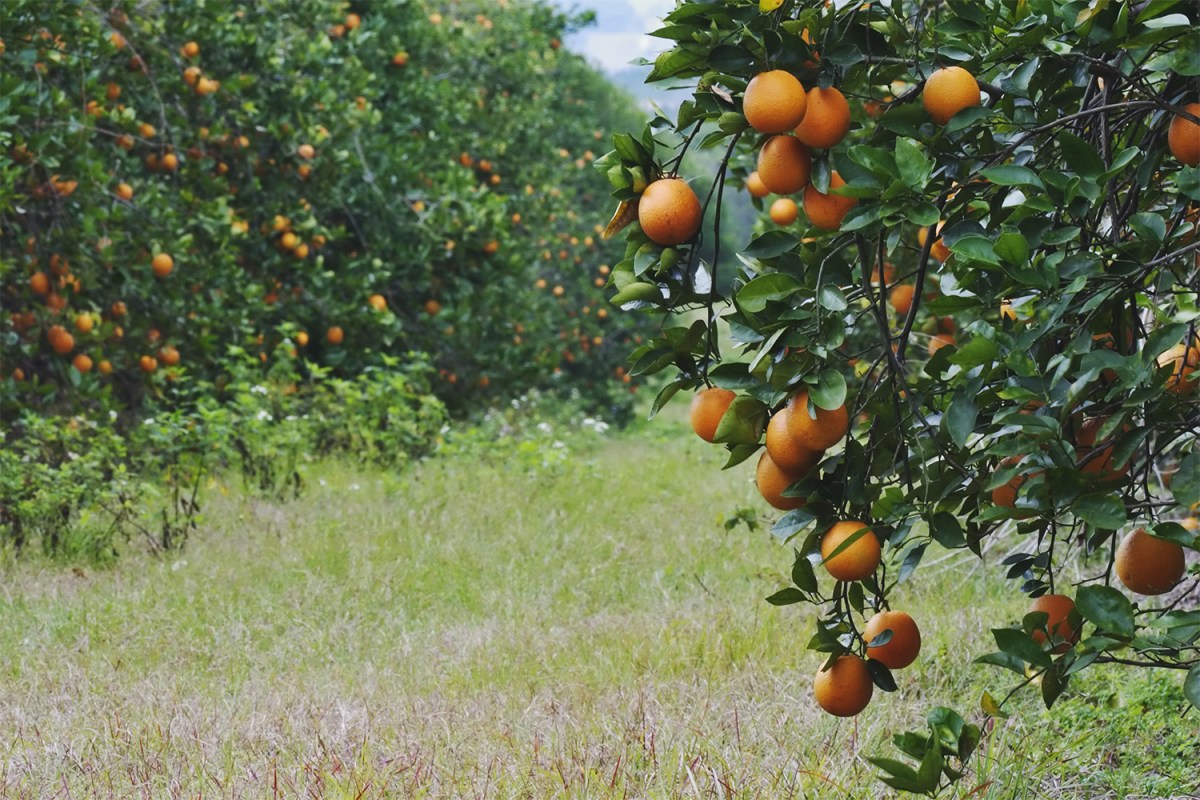Back in October, Florida was struck with some pretty devastating news: The state that has traditionally been the country’s biggest orange producer was slated to reap its smallest crop since D-Day.
The issue begins, as so many problems in agriculture do, with a blight smaller than the eye can see: a bacterial infection known as citrus greening disease. Spread by an insect known as the Asian citrus psyllid, the infection was first found in Florida back in 2005 and has since infested citrus crops from Texas to California. But nowhere has the disease been as devastating as in Florida, where a reported 80% of trees have been affected.
“Researchers estimate that citrus greening disease is present in nearly every commercial citrus grove in Florida,” says Shelley Rossetter, assistant director of global marketing for the Florida Department of Citrus. “With no cure, it impacts groves both small and large.”
The quick-spreading malady prevents oranges from growing to their full size and ripeness, resulting not just in unsellable fruit but even in dead trees. It also, naturally, makes the oranges that do survive more costly to produce.
“The cost to care for groves during this time has nearly tripled due to the use of more frequent and targeted applications of nutrients,” Rossetter explains, “which may make it more difficult for small growers to continue.”
While some promising strides have been made — among the record $112.1 billion budget Florida lawmakers passed this spring is $3 million for continued research into citrus greening — a cure for the disease has yet to be found.
“Until a solution, such as a greening-tolerant tree, is available,” cautions Rossetter, “it will continue to impact production.”
As a direct result of citrus greening, in January, the USDA projected Florida’s crop to be a mere 44.5 million 90-pound boxes of oranges, as compared to 52.8 million boxes last season (and 244 million boxes at the industry’s peak in the 1997-1998 season), placing the state below California in terms of production despite historically producing up to five times as many oranges as the Golden State.
But the news got worse for Florida oranges in April. Following a cold snap, the USDA dropped its Florida orange forecast to just 38.2 million boxes, which means we’re now looking at a yield below even that of the 1937-1938 season, which saw a pitiful 40.87 million boxes harvested.
This isn’t just a devastating blow to the Florida citrus industry, which employs more than 33,000 people and contributes millions of tax dollars to the state. It also translates — in a time following major increases in orange juice consumption during the pandemic (there was a notable 70% spike in the week ending March 21, 2020) — to higher prices for Americans, specifically for orange juice. Florida’s oranges, with their thin rinds and incredible juiciness, are better for making everyone’s favorite breakfast beverage, as compared to the thick-rind California oranges, which are better for eating out of hand.
“I can’t speculate on the price of orange juice in the future,” says Rossetter. She notes that a huge combination of factors — citrus greening and climate change, but also inflation, supply chain disruptions and consumer demand — can all contribute to price changes.
Paying a bit more for your orange juice may well be the price to pay to support local citrus production, at least for now. And that’s exactly what Andy St. Ange, executive chef of Miami’s American Social Brickell, has opted to do.
“Oranges, being the state fruit, are as synonymous with Florida as the sun itself,” he says. “It’s unimaginable that we would be without it.” Notably, he says, the restaurant’s bottomless mimosa brunch is one of the most popular in Miami, and he’s committed to maintaining it.
“At times, it is harrowing trying to get the amount of OJ we need to satisfy our guests,” he says. “Could we do bottomless Bellini variations or Bloody Marys? Sure, but we will work hard towards avoiding that as long as possible. Our focus is on giving the people what they want by any means necessary.”
For St. Ange, that means Florida OJ — no matter the cost.
This article was featured in the InsideHook newsletter. Sign up now.
























